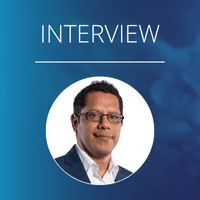Insurance & Corporate Treasury
By ComplexCountries
01/02/2024
We first held a session on insurance eighteen months ago. Like that one, this was a very lively discussion, with a lot of experience sharing and common issues.

Can’t get enough? Check out these latest items
 https://treasuryxl.com/wp-content/uploads/2025/06/Konstantin-Template_BLOGS-Expert-featured-1.png
200
200
treasuryXL
https://treasuryxl.com/wp-content/uploads/2018/07/treasuryXL-logo-300x56.png
treasuryXL2025-11-26 07:00:052025-11-25 16:07:19ISO 20022: Benefits, Challenges and How To of Migration
https://treasuryxl.com/wp-content/uploads/2025/06/Konstantin-Template_BLOGS-Expert-featured-1.png
200
200
treasuryXL
https://treasuryxl.com/wp-content/uploads/2018/07/treasuryXL-logo-300x56.png
treasuryXL2025-11-26 07:00:052025-11-25 16:07:19ISO 20022: Benefits, Challenges and How To of Migration https://treasuryxl.com/wp-content/uploads/2025/11/Featured_ETR_Digital-2.png
200
200
treasuryXL
https://treasuryxl.com/wp-content/uploads/2018/07/treasuryXL-logo-300x56.png
treasuryXL2025-11-25 11:44:332025-11-25 11:44:33ETR Digital Takes Home the Working Capital Innovation Award
https://treasuryxl.com/wp-content/uploads/2025/11/Featured_ETR_Digital-2.png
200
200
treasuryXL
https://treasuryxl.com/wp-content/uploads/2018/07/treasuryXL-logo-300x56.png
treasuryXL2025-11-25 11:44:332025-11-25 11:44:33ETR Digital Takes Home the Working Capital Innovation Award https://treasuryxl.com/wp-content/uploads/2025/10/Kurt-Expert-featured.png
200
200
treasuryXL
https://treasuryxl.com/wp-content/uploads/2018/07/treasuryXL-logo-300x56.png
treasuryXL2025-11-25 07:00:152025-11-24 15:35:04How to Create Lasting Enterprise Value
https://treasuryxl.com/wp-content/uploads/2025/10/Kurt-Expert-featured.png
200
200
treasuryXL
https://treasuryxl.com/wp-content/uploads/2018/07/treasuryXL-logo-300x56.png
treasuryXL2025-11-25 07:00:152025-11-24 15:35:04How to Create Lasting Enterprise Value https://treasuryxl.com/wp-content/uploads/2025/05/Francois-Template_BLOGS-Expert-featured-7.png
200
200
treasuryXL
https://treasuryxl.com/wp-content/uploads/2018/07/treasuryXL-logo-300x56.png
treasuryXL2025-11-24 08:30:272025-11-24 08:32:52Roundtable on Alternative Methods of Funding
https://treasuryxl.com/wp-content/uploads/2025/05/Francois-Template_BLOGS-Expert-featured-7.png
200
200
treasuryXL
https://treasuryxl.com/wp-content/uploads/2018/07/treasuryXL-logo-300x56.png
treasuryXL2025-11-24 08:30:272025-11-24 08:32:52Roundtable on Alternative Methods of Funding https://treasuryxl.com/wp-content/uploads/2025/11/Annette-Interview.png
200
200
treasuryXL
https://treasuryxl.com/wp-content/uploads/2018/07/treasuryXL-logo-300x56.png
treasuryXL2025-11-24 07:00:592025-11-21 08:44:38Interview | Treasury Leadership Across Borders: An Interview with Danilo Gonzalez
https://treasuryxl.com/wp-content/uploads/2025/11/Annette-Interview.png
200
200
treasuryXL
https://treasuryxl.com/wp-content/uploads/2018/07/treasuryXL-logo-300x56.png
treasuryXL2025-11-24 07:00:592025-11-21 08:44:38Interview | Treasury Leadership Across Borders: An Interview with Danilo Gonzalez https://treasuryxl.com/wp-content/uploads/2025/11/Fintech-Connect.png
200
200
treasuryXL
https://treasuryxl.com/wp-content/uploads/2018/07/treasuryXL-logo-300x56.png
treasuryXL2025-11-21 10:00:032025-11-21 11:11:17FinTech Connect 2025: Final Call To Register For The UK’s Biggest Fintech Event As 10th Anniversary Edition Nears
https://treasuryxl.com/wp-content/uploads/2025/11/Fintech-Connect.png
200
200
treasuryXL
https://treasuryxl.com/wp-content/uploads/2018/07/treasuryXL-logo-300x56.png
treasuryXL2025-11-21 10:00:032025-11-21 11:11:17FinTech Connect 2025: Final Call To Register For The UK’s Biggest Fintech Event As 10th Anniversary Edition Nears https://treasuryxl.com/wp-content/uploads/2024/01/Template_VACANCY-featured.png
200
200
treasuryXL
https://treasuryxl.com/wp-content/uploads/2018/07/treasuryXL-logo-300x56.png
treasuryXL2025-11-21 07:00:252025-11-20 15:44:51Vacature Interim Treasury Project Manager – Rotterdam
https://treasuryxl.com/wp-content/uploads/2024/01/Template_VACANCY-featured.png
200
200
treasuryXL
https://treasuryxl.com/wp-content/uploads/2018/07/treasuryXL-logo-300x56.png
treasuryXL2025-11-21 07:00:252025-11-20 15:44:51Vacature Interim Treasury Project Manager – Rotterdam https://treasuryxl.com/wp-content/uploads/2023/03/Treasurer-Search-Logo.png
200
200
treasuryXL
https://treasuryxl.com/wp-content/uploads/2018/07/treasuryXL-logo-300x56.png
treasuryXL2025-11-20 15:33:052025-11-20 15:33:05Interim Treasury Project Manager – Rotterdam @ Treasurer Search
https://treasuryxl.com/wp-content/uploads/2023/03/Treasurer-Search-Logo.png
200
200
treasuryXL
https://treasuryxl.com/wp-content/uploads/2018/07/treasuryXL-logo-300x56.png
treasuryXL2025-11-20 15:33:052025-11-20 15:33:05Interim Treasury Project Manager – Rotterdam @ Treasurer Search https://treasuryxl.com/wp-content/uploads/2025/11/LSEG-BLOGS-featured-12.png
200
200
treasuryXL
https://treasuryxl.com/wp-content/uploads/2018/07/treasuryXL-logo-300x56.png
treasuryXL2025-11-20 07:00:082025-11-19 16:02:22The modern global supply chain: navigating geopolitics, technology & natural resources
https://treasuryxl.com/wp-content/uploads/2025/11/LSEG-BLOGS-featured-12.png
200
200
treasuryXL
https://treasuryxl.com/wp-content/uploads/2018/07/treasuryXL-logo-300x56.png
treasuryXL2025-11-20 07:00:082025-11-19 16:02:22The modern global supply chain: navigating geopolitics, technology & natural resources



The main topical insight was that, compared to the past three years or so, the market has ceased hardening, or is doing so more slowly. Experiences were mixed, but, even if premiums are still increasing, the rate of increase has slowed down. Pressure was significantly lower in the US property market, due to a less severe hurricane season, and D&O. Several participants also reported that the cyber market seems to be maturing. Even so, the environment remains challenging, with a net increase in premiums often happening, if only due to the rise in the value of the assets being insured. Real estate valuations are rising, while inflation and changes in supply chain structures are causing inventory values to rise.
A lot of the call was spent discussing structural and strategic questions. I strongly encourage people to read the detailed report, but the main items were:
Bottom line: insurance can often be something of an orphan child, as it does not incontrovertibly belong in any single function, and there is a constant struggle with budget pressures. However, it is clearly a key part of risk management, and the decisions taken have a significant impact on any company’s financial performance. Premiums have been increasing over the past few years, but pressure seems to be easing.
As was clear from this call, participants who get involved in the area quickly become passionate about it.
The brokers cited in the discussion were Marsh McLennan and Aon. The insurance company which was named most was FM Global..
This report was produced by Monie Lindsey based on a Treasury Peer Call chaired by Damian Glendinning.
To access this report
Access to the full report is available to Premium Subscribers of ComplexCountries. Please log in on the website of ComplexCountries to access the download.
Please contact ComplexCountries to find out about their subscription packages.